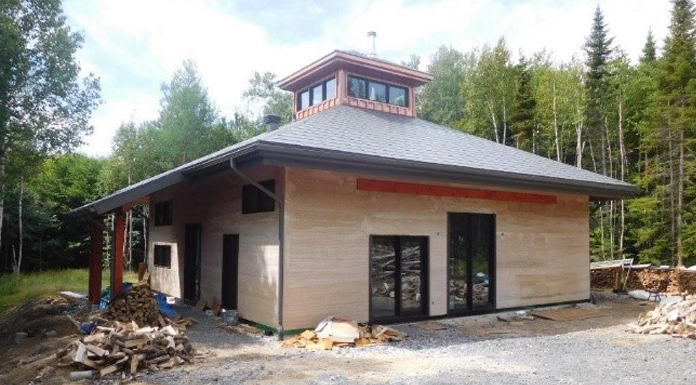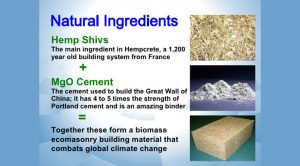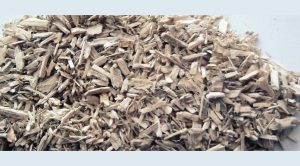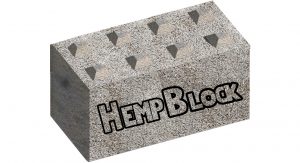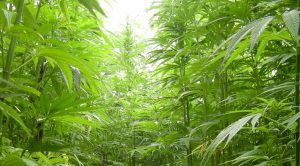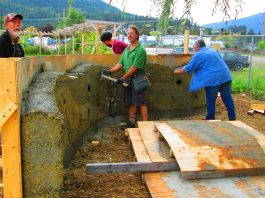Dave Burkey from iHemp USA LLC explains how the HempBlock can provide a better material for energy efficient buildings.
There is a problem with buildings in the United States and, indeed, other countries around the world. For centuries in the USA (and, it should be noted, this method of building is not limited to the USA, but is the preferred method in many other countries, too), builders have been creating ‘stick buildings’. These inefficient structures are built on a concrete slab using 2×4 or 2×6 timber to create the frame. This frame is then filled with fiberglass insulation in an attempt to create more energy efficient buildings. Structures built in this way are very inefficient, are expensive to heat and cool, and the materials used to build them ‘off-gas’1 (that is, they can give off a chemical, especially a harmful one, in the form of a gas) and are therefore bad for the environment and can also pose health problems.
In many mid-eastern countries, the majority of structures are made from concrete because these areas lack the natural resources (forests) required to provide the materials (timber) necessary to build ‘stick buildings’. However, the use of concrete also causes off-gassing, which pollutes the air and causes many health problems.
Of course, everyone wants to be healthy and feel safe in the building they are in, whether this be their home, school, place of work, and so on. And yet, these buildings, as a result of the way they have been constructed, could be making them sick. The solution: go back to natural building.
How can Hempcrete and the HempBlock play a role?
The HempBlock is a load-bearing block made of a Hempcrete-type mixture. Hempcrete is a bio-composite building material made of the inner woody core (shiv or hurd) of the hemp plant, which has been mixed with a lime-based binder and water. When it is cured, it becomes as hard as a rock, and yet it also remains porous.
Using the HempBlock in the construction industry would provide a green, renewable, sustainable way of building. Indeed, we believe that the HempBlock could come to replace concrete, wood, cinderblock, brick, steel, and other methods of building in the future. This is crucial because the current way of building, particularly with regard to the ‘stick buildings’ which are so popular in the USA and other parts of the world, is simply not sustainable. Millions of trees are used to create these buildings and, of course, trees can take a long time to grow, meaning that there just aren’t enough trees for this particular building method to continue indefinitely (and, of course, this is not even mentioning the environmental impacts of logging and deforestation that result from the sheer amount of timber required by the building industry in its current form).
Hemp, however, offers a more sustainable alternative. Hemp can grow to maturity in just three-to-five months and, what is more, hemp does not off-gas like other building materials such as concrete (lime is a natural binder that has been used for thousands of years to create buildings).
What are some of the advantages of Hempcrete?
Some of the other advantages of using Hempcrete include:
- Non-toxic;
- No off-gassing;
- No solvents;
- High vapour permeability;
- Humidity control;
- Durable;
- Sustainable;
- Carbon sequestration;
- Fire resistance;
- Pest resistant;
- Mould resistant;
- Passive self-regulation of temperature and humidity; and
- Excellent insulator.
Why is the HempBlock is even better than standard Hempcrete?
The problem with traditional Hempcrete is that it is not used as a structural element, i.e. it is not load-bearing. As a result, traditional Hempcrete is only used as insulating infill between the frame members. This is nevertheless positive, however, as the result is a lightweight insulating material ideal for most climates as it combines insulation and thermal mass.
An additional problem with traditional Hempcrete is that it takes decades to fully cure. Because of this, it needs a frame to support the building, and this frame is usually made of wood. However, when it is fully cured, it continues to have all of the qualities described above whilst also being as solid as rock and able to last many centuries. And yet, because of the curing time, this does not do away with the need for the use of timber in the initial building construction, and thus the other environmental and sustainability issues that runs tandem to the overuse of wood in the building industry.
However, by using Hempcrete in block form means that they are much more easily used in construction – almost like creating a building with giant Hempcrete Legos. Indeed, by using HempBlocks, it is possible to build a simple house within just a single day!
The current market
Currently, there are numerous companies able to make hempcrete bricks. These are created in various different ways. These include:
- Adding the slurry into wooden forms and leaving them to dry;
- Using machines to press the Hempcrete into brick form before leaving them to cure; and
- Using supporting structures (such as 2×2 timbers) within the bricks so that they can be used for load-bearing walls immediately (however, the bricks which do not include a wooden support structure will still require a frame for structural support).
HempBlock on the other hand, fixes this problem. HempBlock will be formulated with Hemp Hurd, lime, water, and other natural ingredients (the quantities and mixture of the ingredients are still to be determined as the product is still under research and development). These blocks will cure much faster than regular Hempcrete, (at the time of writing, the exact time is currently unknown, but we anticipate that this will be within a week), and will be able to withstand roof and snow loads as well as strong winds (that is, they will certainly be load-bearing).
Uses for the HempBlock
Hemp block is a building material that has many uses. When it comes to building homes, any home that can be built with wood or bricks can be built with HempBlock. But it can be done much quicker if HempBlocks are used.
With regard to other buildings: due to the fact that HempBlock is load-bearing and cured, it is possible for them to be used for any building type – from stores, to schools to government buildings, warehouses, apartment buildings, and so on.
It is also important to note that HempBlocks can be used anywhere in the world. Since HempBlocks are in a cured state, they can be seen as being similar to porous rock and therefore work in any weather condition. The fact that it will be possible for them to be shipped to or manufactured in any part of the world means that they will be particularly useful in countries and regions which don’t have many trees for use in timber buildings.
HempBlock also has a high R-value (the exact R-Value is yet to be determined, but is expected to be around 40-60), meaning that the amount of energy (and thus the cost involved) necessary to heat and/or cool a building will be negligible. Indeed, the insulation factor of the HempBlock keeps the structure at a steady temperature and so, of there is any need to heat or cool the building at all, this will only ever be minor (depending, of course, on the area in which the building has been constructed). This stands to save people thousands of dollars in energy bills.2
Even more benefits
As previously mentioned, HempBlocks are able to be stacked like giant Lego bricks (although, of course, they are significantly larger), making construction much easier that the traditional method, as well as making construction much quicker. Furthermore, they are a lot lighter than a concrete or cinderblock of the same size. The estimated dimensions of a single HempBlock are: 1ft wide x 1ft high x 2ft long.
When using these blocks, the need for a wooden frame is practically zero (although, of course, wooden frames may still be necessary for windows and doors, as well as for decorative effects). Because HempBlocks turn to petrified rock, they will last for centuries, and they also contain the necessary holes for the running of water and electrical lines, the inclusion of electrical devices such as switches and outlets and water lines and devices. Furthermore, these devices are easy to install.
HempBlocks can also be formed in whatever shape the builder requires, making construction even easier, and, moving forwards, we hope to be able to use large-scale 3D printers to build HempBlock buildings.
Research and Development
iHempUSA LLC is currently in the research and development stage of this product (and so things like the PSI rating are thus far undetermined) and hopes to have a viable product by the spring of next year (2021). However, additional capital is required for this to be successful. This funding will be used to purchase the ingredients and to formulate the mixture (along with, of course, the many other business expenses involved in developing a new and innovative product).
Thus, as I continue to work on putting together a team to help develop HempBlock, I am also looking for investors to invest in this amazing product and would love to hear from anyone who has an interest.
References
- https://www.greens.build/blogs/greensblog/off-gassing-what-it-is-how-to-avoid-it/
- The energy efficiency of the building will, of course, also depend on the amount of heat that is able to leak from windows and doors, and so this should also be taken into consideration when constructing the building (in the same way as it is in traditional construction)
Dave Burkey
iHemp USA LLC
+1 720 585 5070
info@ihempusa.com
www.ihempusa.com
Please note, this article will also appear in the second edition of our new quarterly publication.

